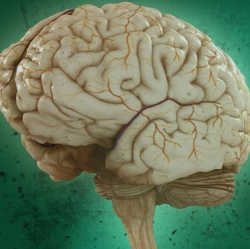
A machine-learning algorithm has analysed brain scans of 6-month-old children and predicted with near-certainty whether they will show signs of autism when they reach the age of 2. The finding means we may soon be able to intervene before symptoms appear, although whether that would be desirable is a controversial issue.
“We have been trying to identify autism as early as possible, most importantly before the actual behavioural symptoms of autism appear,” says team member Robert Emerson of the University of North Carolina at Chapel Hill.
Previous work has identified that bundles of nerve fibres in the brain develop differently in infants with older siblings with autism from how they do in infants without this familial risk factor. The changes in these white matter tracts in the brain are visible at 6 months.
For the new study, Emerson and his team did fMRI brain scans of 59 sleeping infants, all of whom were aged 6 months and had older siblings with autism, which means they are more likely to develop autism themselves.
The scans collected data from 230 brain regions, showing the 26,335 connections between them. When the team followed-up with the children at the age of 2, 11 had been diagnosed with an autism-like condition. The team used the brain scans from when the babies were 6 months old and behavioural data from when the children were 2 years old to train a machine-learning program to identify any brain connectivity patterns that might be linked to later signs of autism, such as repetitive behaviour, difficulties with language, or problems relating socially to others.
After the training, the program used only the patterns from the 6-month-old brains to predict which of the children would show signs of autism at 2 years old. It correctly identified nine of the 11 who had been diagnosed at that age.
“The study confirms that autism has a biological basis, manifest in the brain before behavioural symptoms appear, and that autism is not due to environmental effects that occur after 6 months, for example, vaccinations,” says Uta Frith of University College London. “This still needs pointing out.”
The goal is to use such a classifier system to identify infants likely to develop autism at an early age. “That is the idea,” says Emerson. “What we desperately need to do is replicate the study first.”
The ability to predict who will develop behaviours linked to autism raises the prospect of giving training to parents so they can reduce the impact of some less-positive aspects of autism. Emily Jones of Birkbeck, University of London, and her colleagues have studied early interventions in which parents enhance their own responses to an infant’s social communication cues and behaviours. “We have shown that those kinds of interventions can help in reducing symptoms long term, both behaviourally and also in the brain,” says Jones.
About 20 per cent of children with a high familial risk of autism go on to be diagnosed with the condition, but only around 1.5 per cent of the general population have autism. If Emerson’s system can provide a way to predict which high-risk infants might benefit from early interventions, the challenge will be to extend the technique to work for children with a lower likelihood of developing autism.
“Even if the classification works well on the present data set, we don’t know how well it would work with a completely new set,” says Frith, who warns that the machine learning algorithms could lead to false positives.
The idea of intervening before behavioural characteristics appear is a controversial one. Many people consider autism to be a fundamental part of their personality, and although some autistic people have substantial difficulty communicating or forming relationships, some people with autism value traits such as abilities to concentrate, pay attention to detail or see things from a novel perspective. It’s hard to know whether early intervention could disrupt these.
In theory, machine-learning algorithms may be able to identify not just children who are likely to develop autism, but those who are likely to have particular problems, such as difficulties with language. If so, then early intervention therapies could be targeted to those who would benefit from help fostering those specific skills. “That probably could remove some of the controversy,” says Jones.
